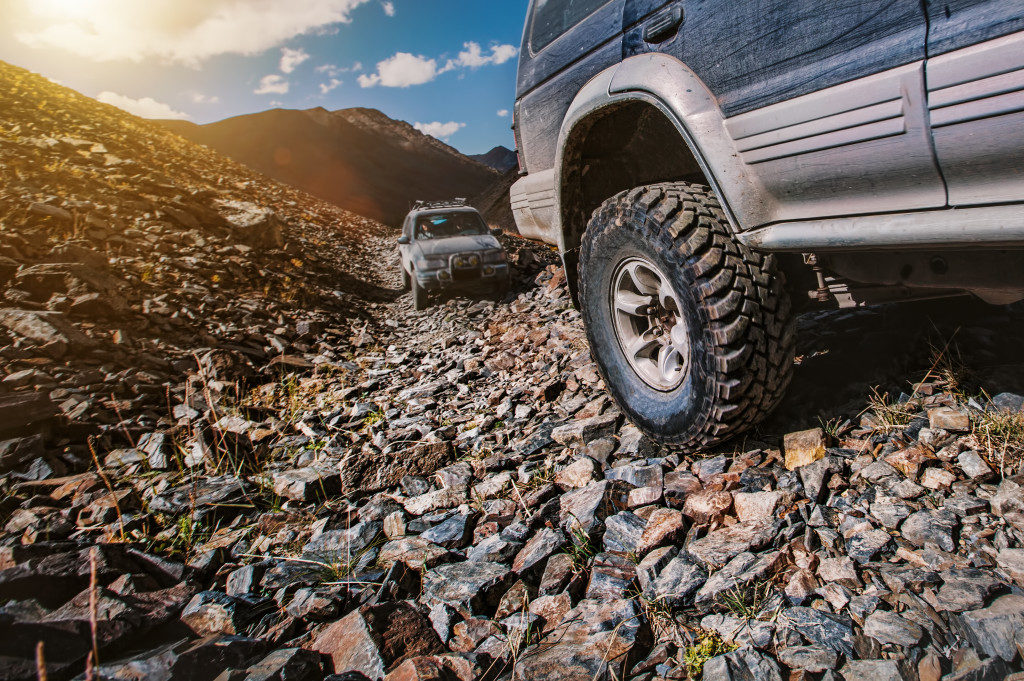One of the most enjoyable activities is taking your Jeep off the beaten track and traversing the back-country lanes and trails. Before you take your stock Jeep off-road, you need to prep the vehicle to make it rough-road ready. Here’s how to do it.
1. Get the Right Tires
Stock Jeeps usually have a higher ground clearance than other standard vehicles. If your Jeep sits lower and comes with street-legal tires, you’ll want to change them. Street tires may save your fuel consumption and provide better braking for the stop-and-go style of city driving, but they are a huge hazard for off-road driving. As a guide for the right size of tires, think what off-road driving you are most likely to do; for example, dune bashing, rock-crawling, mudding, cross country or off-road racing.
2. Give it a Lift
In addition to larger tires, your Jeep will need a higher suspension to get enough road clearance. This will prevent rocks and tree stumps from wreaking havoc on your undercarriage, and cushion the shock of each wheel going over rough terrain, deep potholes and sudden dips. Expect a good lift kit to cost upwards of $2,000. Don’t bother with cheap for $20 or $30 as they aren’t made to take the punishment of off-road driving. If you’ve never installed a lift kit on a Jeep before, go to a professional outfitter.
3. Get a Custom Drive Shaft
Once you’ve got a lift kit and bigger tires, change the drive shaft to one that can handle the added weight and torque requirements for these off-road adjustments. Get the drive shaft that’s made for your Jeep model like a Jeep TJ drive shaft for Jeep TJs, YJ drive shaft for Jeep YJs, and so on. Don’t go off-road on a factory drive shaft as these can only handle the stress and torque from factory lift heights and tires. The factory drive shaft will fail with custom parts and cause costly repairs and replacements or worse, lead to a serious accident.
4. Get a Custom Track Bar
Next, replace the track bar. An essential part of a Jeep’s suspension, the track bar links the frame to the axle and keeps the axle centred. If you add a lift kit, the track bar will need to be longer and tougher. Some lift kits include relocation brackets to allow reusing the stock track bar, but it’s better to use adjustable track bars to avoid any compatibility and durability issues.
5. Get some Armor
After the up-grade of off-road custom parts, install skid plates to protect the undercarriage. In off-road driving, boulders can easily dent the transfer case or oil pan and put your Jeep out of commission. No matter how high its road clearance, a skid plate is a wise investment to protect your Jeep’s underbelly. Another piece of armor worth the investment is a roll cage. Not only does a roll cage give you and your passengers something to hold onto when the ride gets bumpy, it’s a good safety feature in case the Jeep rolls. A roll cage also adds strength and stability to the chassis.
Before you put on the sturdiest off-road parts on your Jeep, decide on the type of trails you want to go on, then customize from there. Don’t take on the more difficult trails if you’re a beginner and don’t go overboard outfitting your Jeep to suit the trail. If you take on the hobby at your own speed, you’ll reach your destination quicker!




